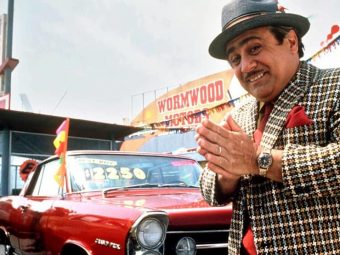A used car study analysed 1.9 million anonymised VIN checks run by shoppers and dealers in the U.S. from January–September 2025. Here’s what the study revealed:
– 27% of checked vehicles had at least one major red flag.
– 7.6% carried a branded title (salvage, rebuilt, lemon, junk).
– 3.1% showed flood or water indicators.
– 5.8% had odometer concerns (rollbacks, mileage gaps, or conflicting readings).
– 10.1% included a major accident/structural event somewhere in the history.
– 2.2% showed open liens or ownership issues that could slow a sale or transfer.
– 14% were seen at auction at least once within 90 days before a retail listing.
Why this matters: A car can look fine on the lot. But its history can tell a different story. These flags often connect to higher repair costs, lower resale value, or paperwork delays.
Biggest red flags (and what they really mean)
Branded title (salvage/rebuilt/lemon/junk)
It had formerly had significant damage or was illegal. Even after being repaired, insurance premiums and resale will be affected.
Flood or water
Water seeps into wiring, sensors, carpets, and safety gears. Repair can appear later (rust, electrical, mildew).
Odometer anomalies
Mileage that isn’t synchronized can obscure wear, reduce service life, and impact warranties or financing.
Major accident / structural
Frame repairs and airbag deployments can change how the car protects you in a crash. Alignment and tire wear can also suffer.
Active lien / title problems
The seller may not have the right to transfer ownership cleanly. You could get stuck waiting—or lose the car and your money.
Where risk is higher (regional clues)
– Flood flags cluster near coasts and river basins. We saw higher water-damage rates in Gulf states and Atlantic storm zones after heavy-weather seasons.
– Accident and corrosion risk rises in snow states. Freeze/thaw, salt, and winter traffic patterns can increase repair events and rust.
– Auction-to-retail flips are more common near major logistics hubs (ports and rail). This is not bad by itself, but fast title changes deserve a closer look.
Tip: A “clean” title does not guarantee a clean history. Photos, event dates, and locations tell the fuller story.
Vehicle types: how flags differ
Pickups & large SUVs: Data revealed ~11–13% higher odds of branded titles versus compact cars, often tied to heavy use, towing, or prior commercial duty.
Compact sedans & small crossovers: Fewer branded titles, but more odometer disputes in budget segments where resale incentives are high.
EVs & hybrids: Lower title-brand rates overall, but more total-loss claims after flood events if batteries or high-voltage components were exposed to water. Always check post-event photos.
How trouble hides on paper (and how to spot it)
Some problems don’t show in one place. Look at patterns:
-Title hop: Auction → quick resale → new state.
Action: Check dates, mileage at each event, and who owned it. Sudden jumps can hide damage or odometer tricks.
– Photo mismatch: Pre-repair photos show airbags out, later photos look perfect.
Action: Compare panel gaps, headlight color/age, paint texture, and VIN tags on doors/hood.
– Service gaps: Big time periods with no entries.
Action: Ask for receipts and check if the mileage timeline still makes sense.
– “Just detailed” flood flips: Fresh carpets, new seat foam, ozone smell.
Action: Lift mats. Look for silt, rust on seat rails, water lines in trunk wells, and fogging in lamps or screens.
A 5-minute red-flag scan (use this before a test drive)
Check the timeline. Do dates and mileage move in a straight line? Any sudden jumps?
Scan photos. Look for airbag deployments, panel replacements, and water clues.
Match the VIN on dash, door jamb, hood, trunk. Inconsistencies can mean parts swapping or theft history.
Walk away power. If anything feels off, don’t justify it. There are other cars.
What the experts recommend
– Read past the headline. A “clean title” does not equal a clean history.
– Chase the story, not the shine. Dates, mileage, and photos should agree.
– Use a lift or inspector for anything you love. A $150–$300 inspection can save thousands.
Real examples often encountered
– The flood flip: Car shows a storm-area title in spring, quiet for 45 days, reappears in a different state with new carpets. The photos show light rust on seat rails. Buyer runs EpicVIN, walks away.
– The mileage jump: Two services at 82,000 and 84,500 miles, then a sale record at 68,100. The gap is a rollback red flag.
– The “clean” salvage: Seller says “minor damage.” Report shows airbag deployment and structural repair six months earlier. Title is rebuilt. Price seems great; safety may not be.







